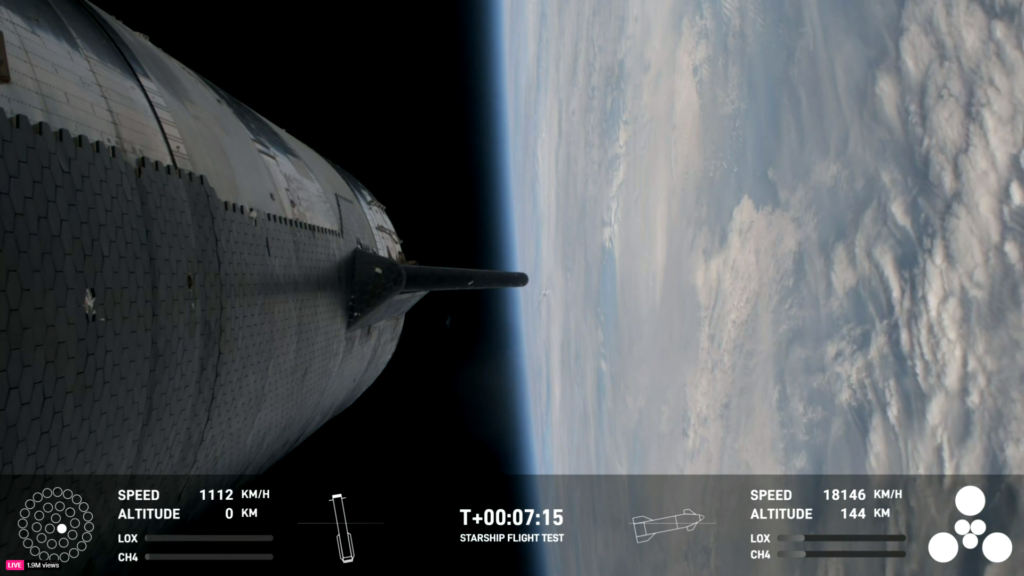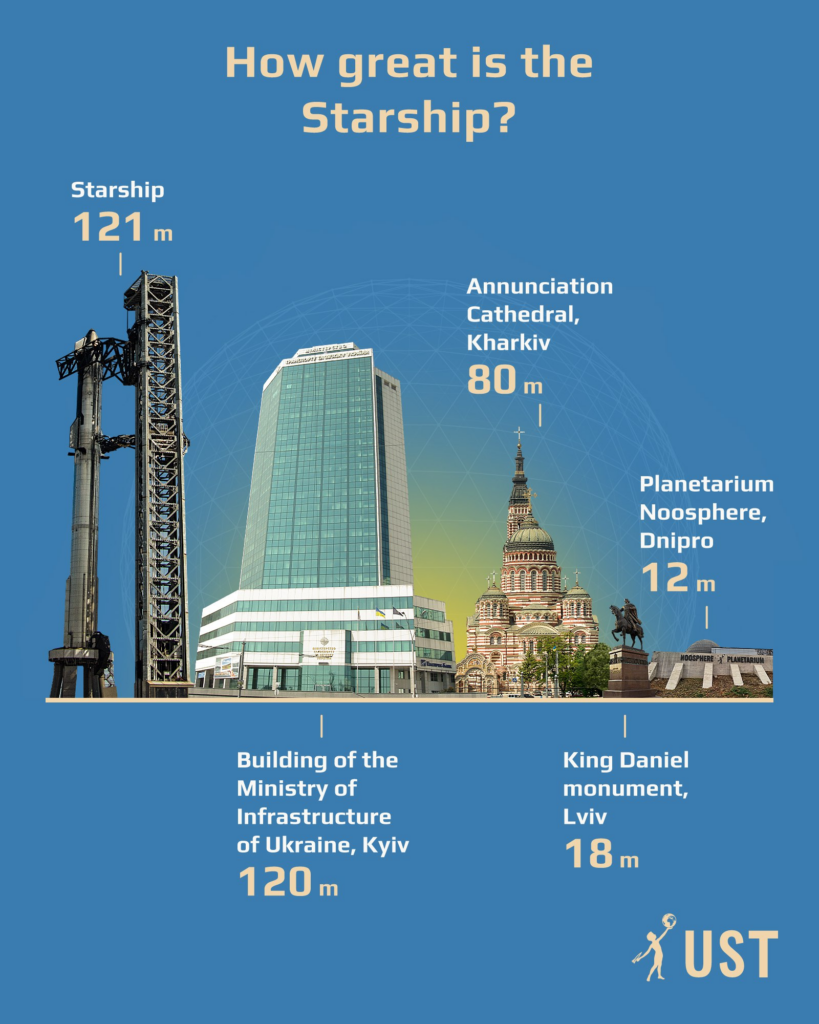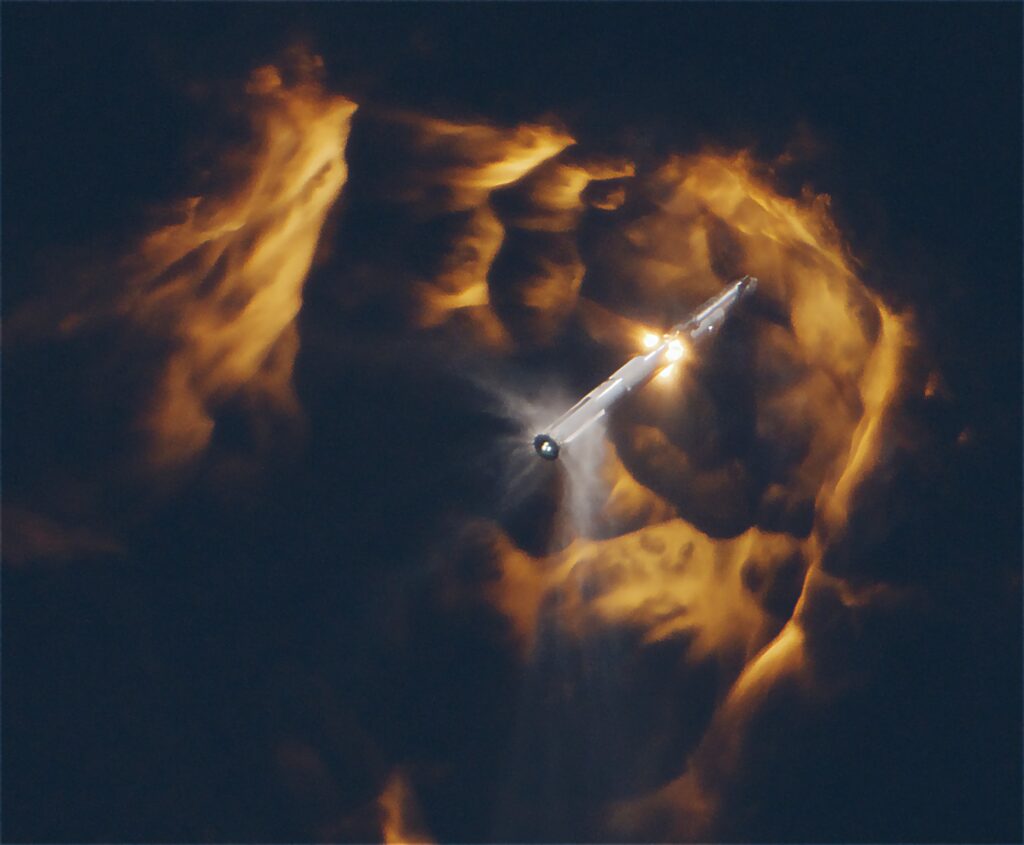SpaceX has carried out the third test of the new Starship spacecraft. It has successfully completed most of the tasks assigned to it.

Starship was launched from the SpaceX test site in the Texas village of Boca Chica. The launch took place without any complications. The Super Heavy booster successfully completed its section, after which it separated from the spacecraft. Next, it performed a return maneuver and landed in the Gulf of Mexico. However, the final braking maneuver clearly did not go quite as planned. But in any case, this is huge progress compared to previous flights.
As for Starship, it also successfully reached the desired trajectory, after which it began to implement the test program. It included three key tests:
- opening the cargo compartment;
- pumping fuel between the spacecraft’s tanks;
- re-activation of the Raptor engine in vacuum.
SpaceX engineers managed to open and close the Starship cargo hold, and also conducted a fuel pumping test (about success, it will be announced later). But the re-activation of the Raptor engine did not happen due to technical problems.
The last part of the flight was the entry into the atmosphere. At that moment, the spacecraft was moving at a speed of 7.4 km/s. Thanks to the Starslink satellite communication system, those who watched the broadcast could see in real time the incredible sight of how a plasma cloud formed around Starship. Unfortunately, at the moment when the spacecraft was at an altitude of 65 km, the broadcast was interrupted. SpaceX later confirmed that they had lost all telemetry from Starship. This suggests that the spaceship was destroyed at this stage.
Starship re-entering Earth’s atmosphere. Views through the plasma pic.twitter.com/HEQX4eEHWH
— SpaceX (@SpaceX) March 14, 2024
Perhaps the Starship died due to the loss of some of the heat shield tiles. At the moment of entering the atmosphere, fragments flying away from the spacecraft could be seen in the broadcast. Most likely, they were tiles. In addition, judging by the telemetry, in the last seconds of its life, Starship abruptly changed its position several times, as if it was spinning. Perhaps it was these maneuvers that led to the destruction of the spacecraft.
In any case, the third test can rightfully be called a great success for SpaceX. The company’s specialists managed to solve most of the tasks set, and Starship carried out a steady flight. As for the identified problems, they will be the target for the next test. It is not yet known when it will take place, but it is obvious that SpaceX will try to hold it as soon as possible. If four months passed between the first and second test, then the second and third were separated by only four months. Earlier, Elon Musk announced his intention to carry out six Starship flights in 2024.
Brief History of Starship
Starship is the largest launch vehicle in history created by SpaceX. It consists of a spacecraft of the same name and a booster (first stage) called Super Heavy. Both components are reusable. The length of the Super Heavy is 71 meters. The stage is equipped with 33 Raptor engines using methane as fuel and liquid oxygen as an oxidizer. The length of the Starship is 50 meters, it is equipped with six Raptor engines. In the reusable version, it will be able to deliver 100-150 tons of cargo to low Earth orbit.

The first flight of Starship took place on April 20, 2023. During the ascent, a number of Raptor engines shut down at the giant rocket. This was due to a fire in the engine compartment. As a result, it reached the 39 km mark, after which it lost control, began to rotate uncontrollably and then destroyed.
The second flight of Starship took place on November 18, 2023, and was much more productive than the first. This time, the Super Heavy booster worked out the entire flight section, after which it successfully separated from the spacecraft. However, it was destroyed shortly after that. This was due to a clogged filter used to supply oxygen to the engines.

Starship continued its rise. But when it was close to reaching the first space speed and entering orbit, the spacecraft was undermined by an emergency flight abort system. The cause of the accident was the discharge of excess liquid oxygen, which was used to simulate a payload. During the procedure, there was a leak in the rear of the spacecraft, which led to a fire. This triggered the flight abort system.
Follow us on Twitter to get the most interesting space news in time
https://twitter.comne/ust_magazine


